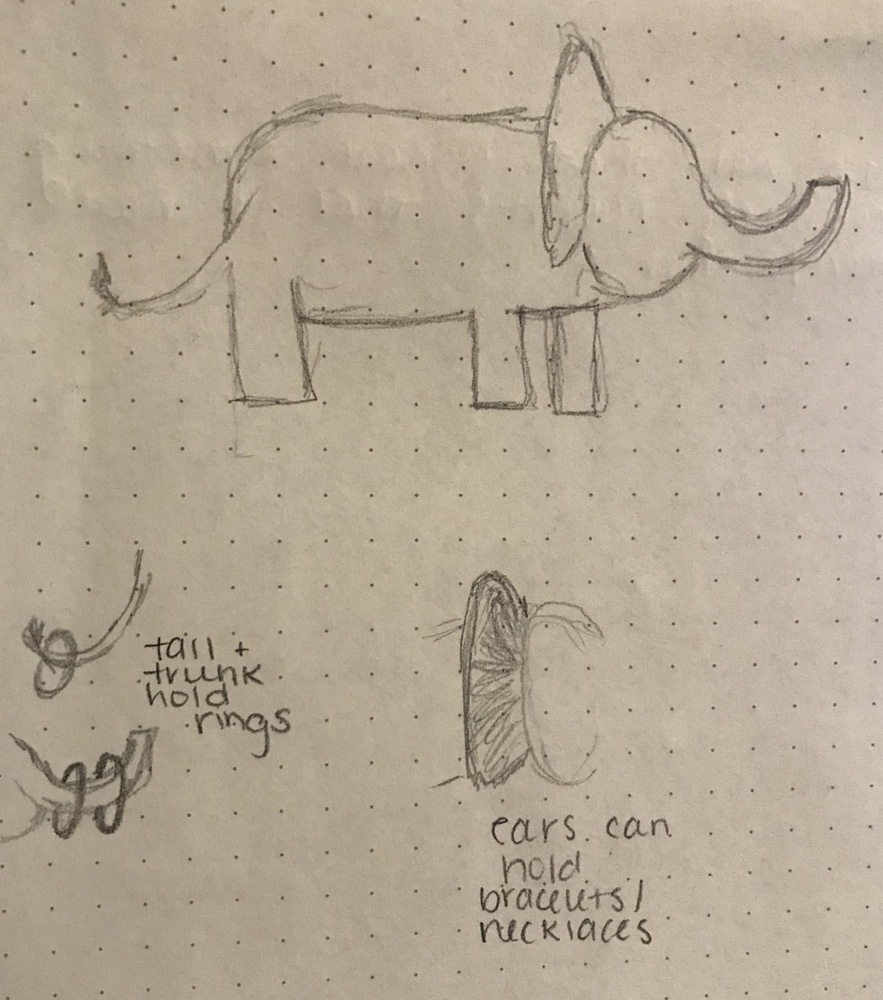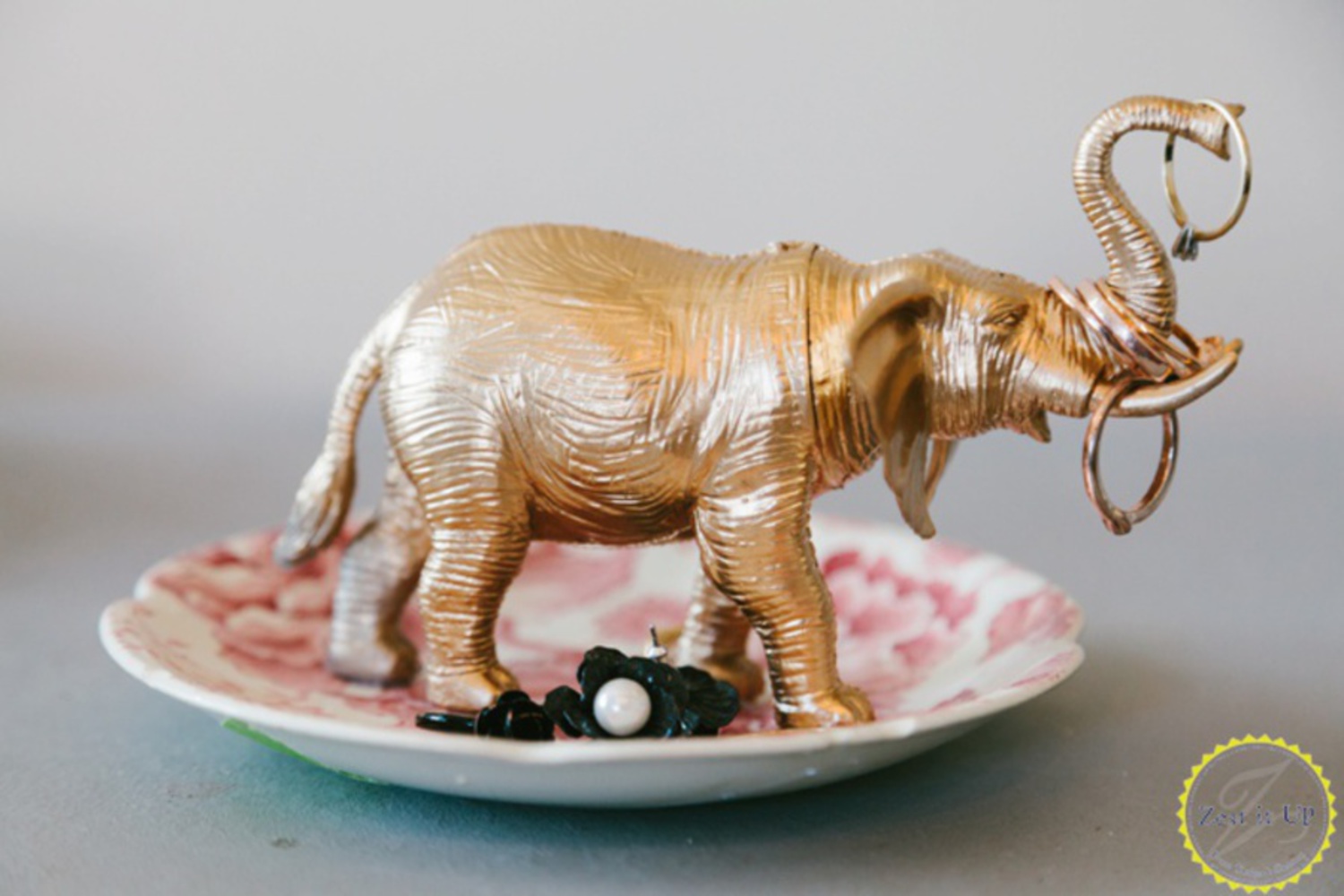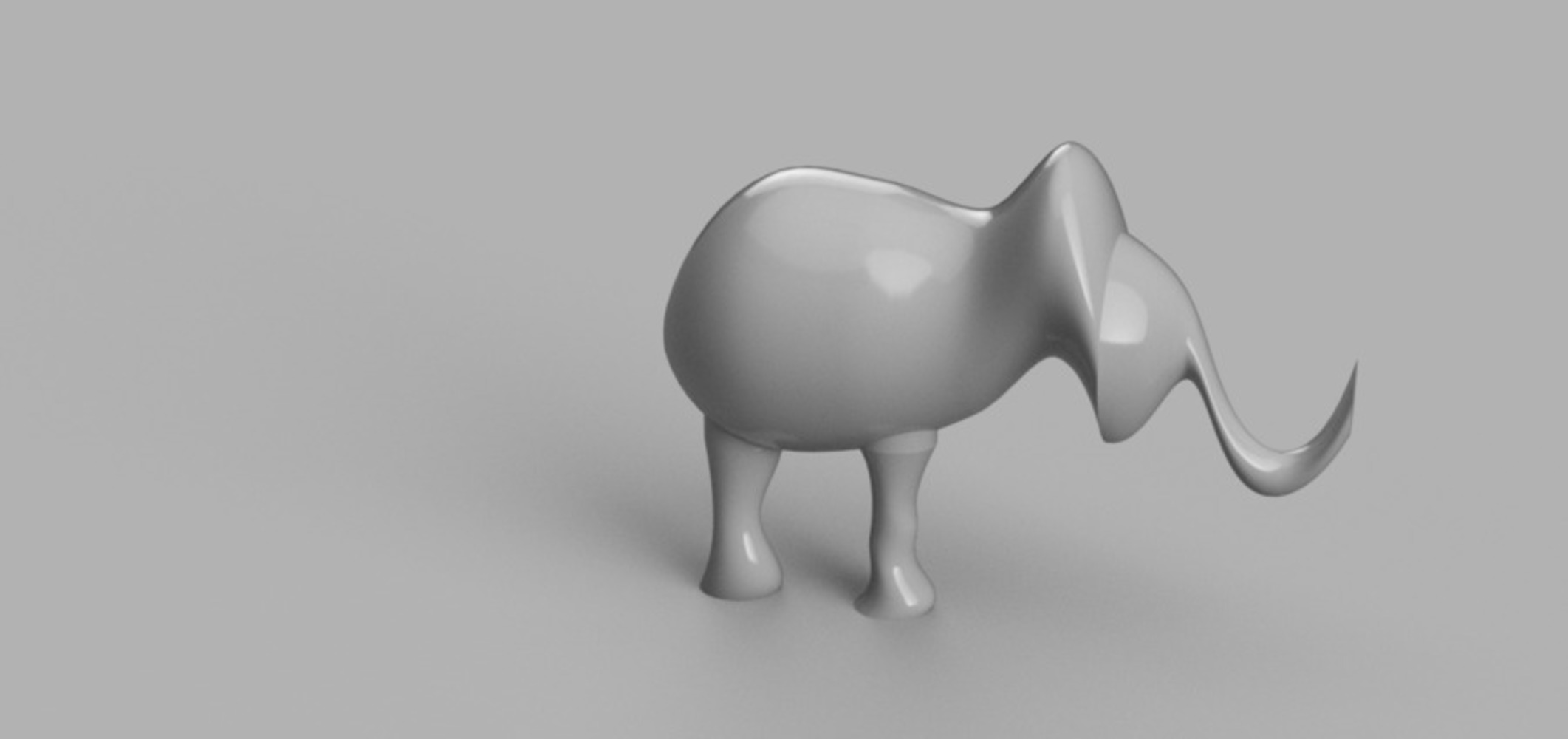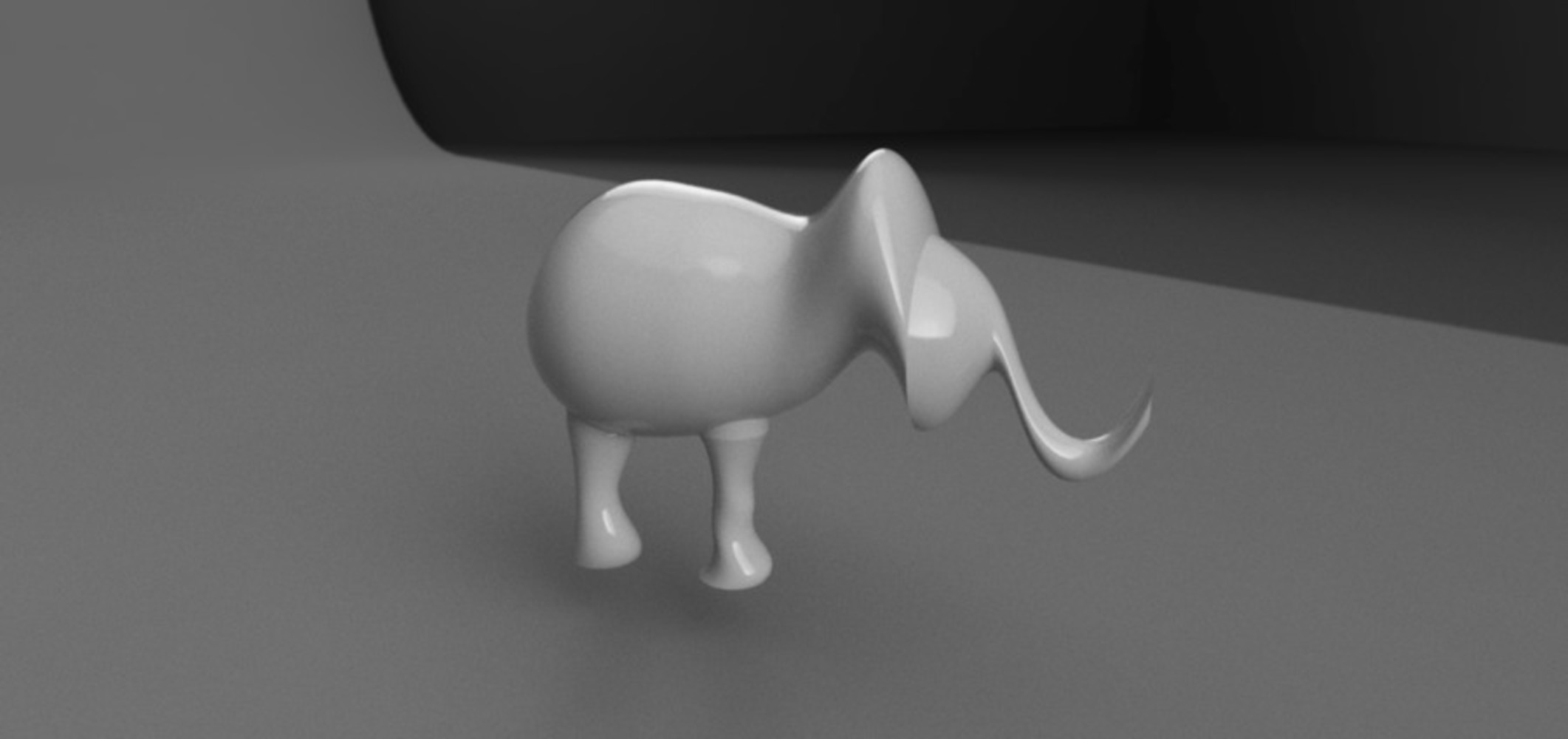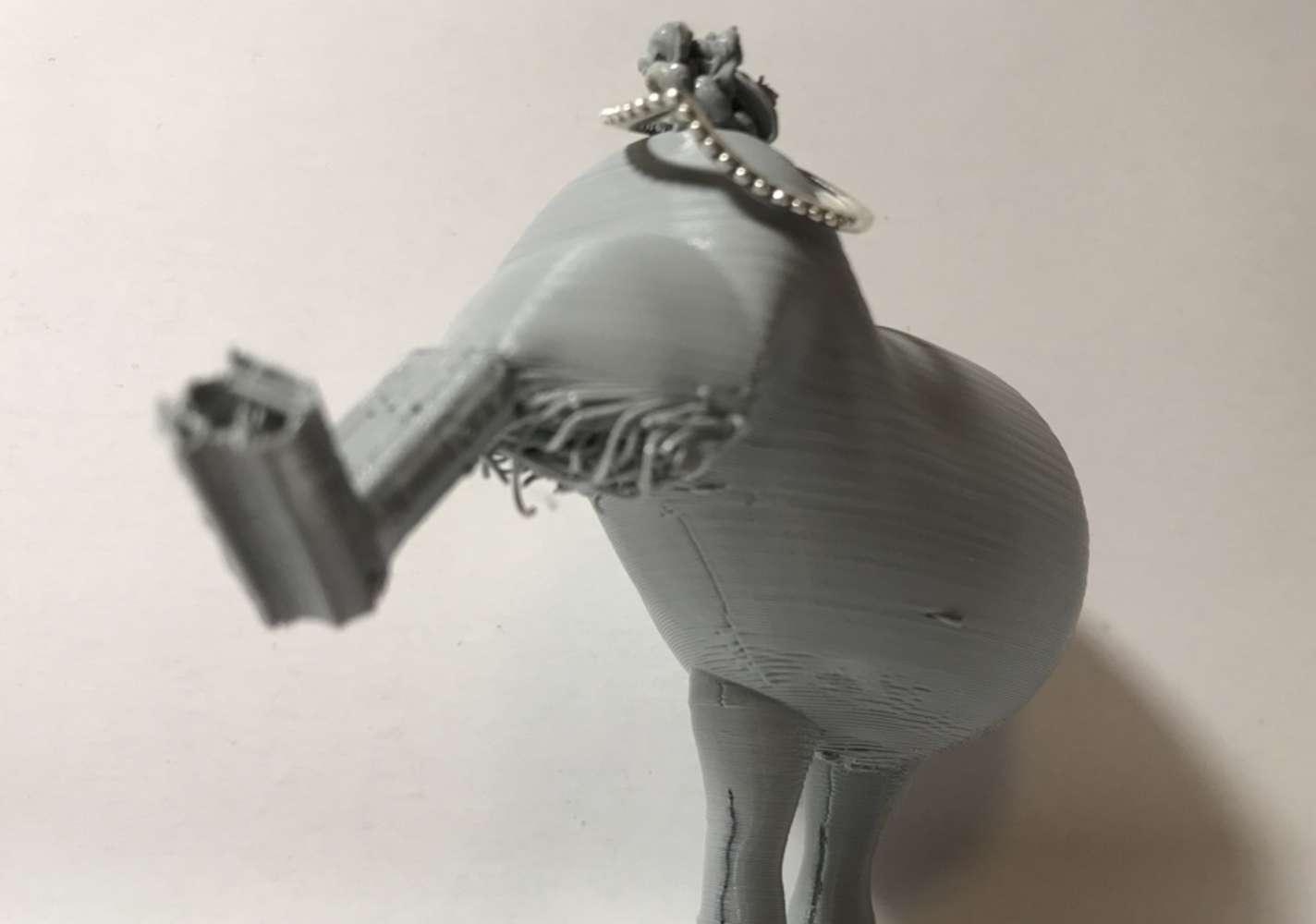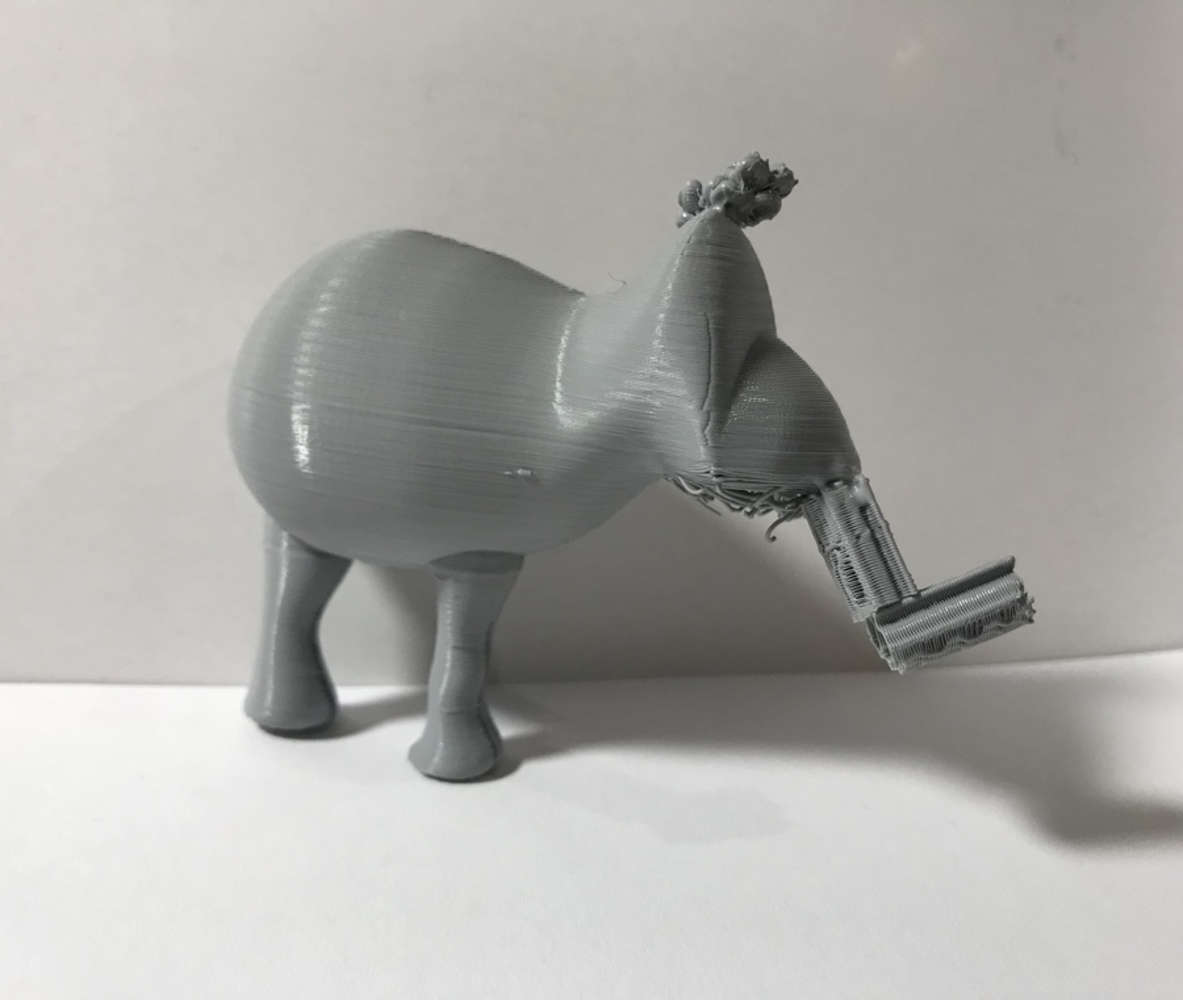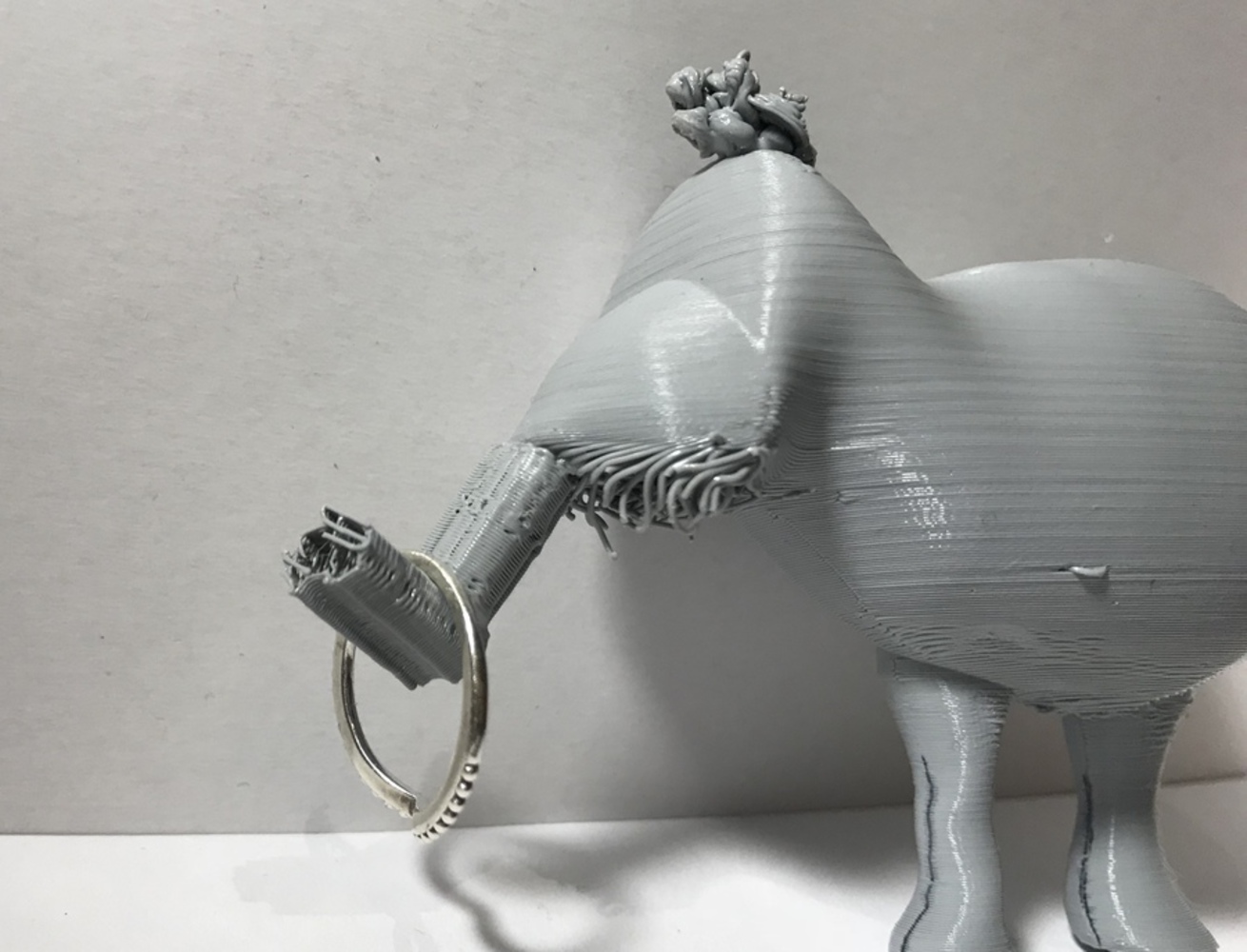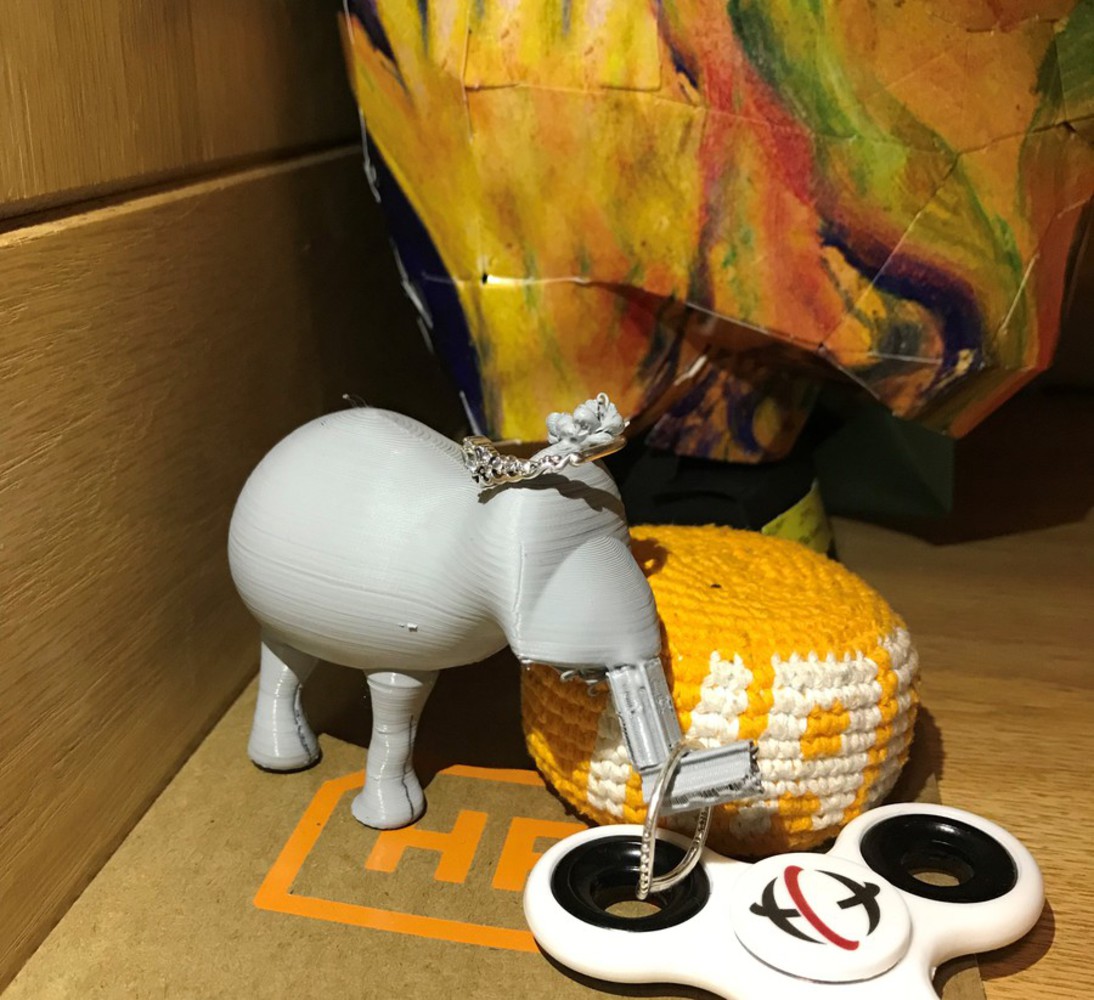Process & Procedure
[Outline your approach to the project. What steps did you take to design, model, sketch, and prototype this projects? What ideas did you generate and how did you refine or reject them? How did you use cutting, etching, scoring? What challenges were encountered and how did you resolve them? Include photos of prototypes, redesigned sketches, design worksheets, and failed trails.]
After deciding I wanted my design to be an elephant ring holder, I began to model in Fusion 360. I tried a few different methods in Fusion. My first strategy was to create half of the elephant and then mirror it to create the other half. However, this plan was more complicated than expected because of the difficulty to accurately model half an elephant. My second plan was to fully model the elephant by using a reference picture in Fusion. While this method worked better, it still proved challenging with issues such as the trunk and legs.
